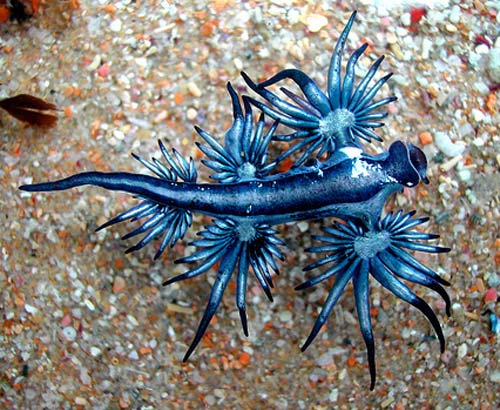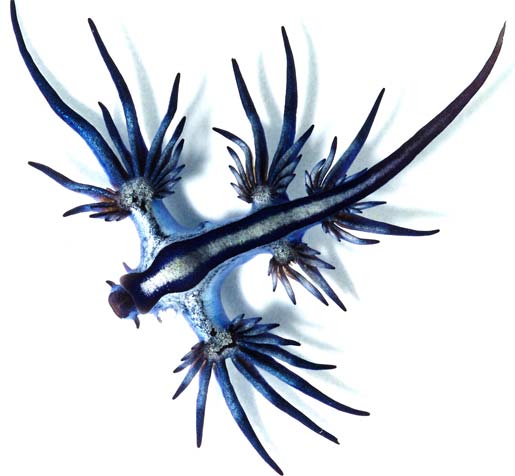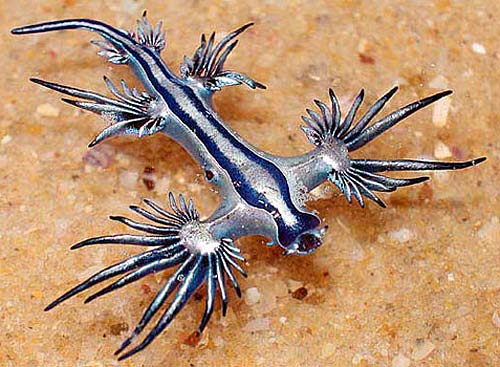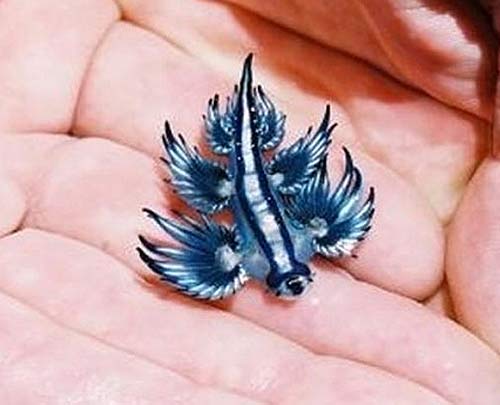Blue Sea Slug – Little, Blue, Big Sting

Also known as the sea swallow, blue angel, blue glaucus, blue dragon, blue sea slug, and blue ocean slug, the Glaucus atlanticus is a small species of “sea slug” (or more correctly and specifically, a nudibranch). It is known for its stinging nematocysts – a defense mechanism that makes it dangerous to not only other aquatic life, but humans as well.
Fully grown, these natives of the world’s temperate and tropical ocean waters (including those off the coasts of South Africa, Australia, and most of Europe) never grow larger than 1.2 inches (3 centimeters) in length, and are characterized by a flat body that has six appendages branching off from it. The long black appendages, black and grey stripes on a blue body, make for a striking appearance.

Although tiny, this species of nudibranch has been observed to kill and feed on the much larger Portuguese Man O’ War; storing and concentrating the creature’s venom for its own use at a later time. This practice has made the little blue creature a very respected organism amongst divers and swimmers, and obviously grants it a good amount of protection from predators.

In regards to reproduction, the Glaucous atlanticus is a hermaphrodite, possessing both male and female reproductive organs; after mating, both partners produce egg strings. Currently under no threat of extinction, this creatures population is thriving in all of its ranges.

